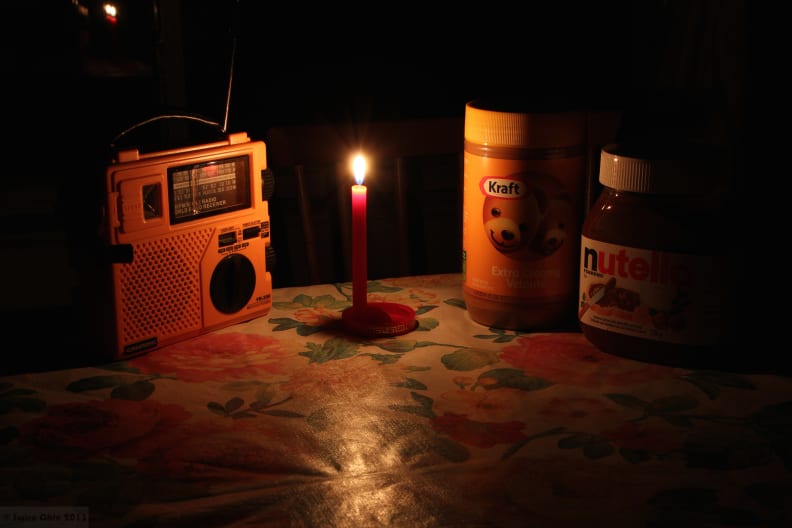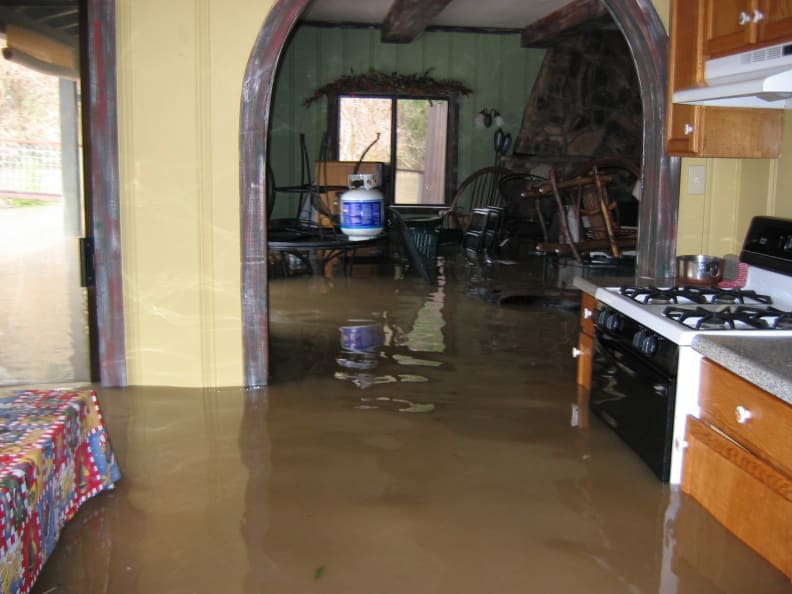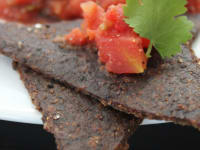This is how to keep food from going bad during a power outage
Stock up on bottled water, but not for the reason you think...
Products are chosen independently by our editors. Purchases made through our links may earn us a commission.
Since big storms and other natural disasters can leave you without power for hours, days, or even weeks, one of the most important things to take into consideration is food storage and safety. Not only do you want to maximize the life of your perishables, but you also want them to be safe to eat.
Read on and we'll explain how you can prepare your food for an extended outage, or skip ahead to what you can do right now if you're already in the midst of a power outage.
How can I prepare?
If a storm is on the way, one of the best things you can do is freeze your food. The FDA recommends freezing both containers of drinkable water and perishable foods that you won't need right away.
"Take your small water bottles and you can just stuff the freezer with those," says James Judge, a member of the American Red Cross Scientific Advisory Council. He adds that they will work much better than bagged ice when it comes to filling up remaining freezer space.
Turn down your fridge and freezer, and fill those water bottles.
Frozen water bottles can also be used as ice packs for coolers, and will help keep food cold longer. Make sure to freeze any ice packs you have lying around, and invest in some bagged ice to fill in the cracks in the coolers. If you don't own any coolers, now's the time to buy some.
The FDA also recommends that you try to find stores that sell blocks of dry ice, as they'll be helpful if you're without power for multiple days at a time. If you don't fill your freezer to the brim, make sure to pack everything close together, so that when the power does go out, your food stays frozen longer.
{{amazon name="Coleman 100 Quart Xtreme® 5-Day Cooler", asin="B000G64FJK", align="right"}} Get thermometers for both your refrigerator and freezer. You want to make sure both compartments stay at or below 40 degrees Fahrenheit once power is out. Any higher and you risk spoilage and/or food poisoning. For the fridge, put a thermometer in a glass of water to approximate the temperature of food as opposed to the air that surrounds it.
If you live in a flood-prone area, store non-perishables and bottled water on shelves to keep it away from potential flood waters.
Finally, don't forget to keep a good supply of non-perishable and canned foods that can be eaten without cooking. Ready.gov points out that you'll want to avoid foods that make you thirsty, so choose canned foods with a lot of liquid and reduced sodium.

The power's out. Now what?
First and foremost, do not open your fridge or freezer unless it's absolutely necessary. The FDA warns that your refrigerator will only stay cold for four hours and your freezer for 48 hours under ideal conditions.
Some appliances may last longer—a Frigidaire spokesperson told us that their fridges can last anywhere from eight to 24 hours—but you should play it safe and use thermometers if you have them.
If in doubt, throw it out.
If you expect to be without power for more than a few hours and it's safe to leave your home, buy some dry ice to keep your fridge and freezer cold. Now is also the time to pack coolers with ice and perishables if needed.
When it does come time to eat, the FDA strongly urges you to thoroughly cook perishable foods, especially meats, to the correct temperatures. Make sure that the food is still cold before cooking it. If it has been above 40 degrees for more than two hours, do not eat it—throw it away.
"If in doubt, throw it out," says the Red Cross's Judge. "If you're not sure if the food is good, don't try to taste it or eat some of it to find out if it's safe. That's dangerous."
And if you do manage to prepare hot food, hold off on putting leftovers in the fridge.
"The refrigerator or freezer may need to recover temperature, depending on the duration of power outage," says a Frigidaire spokesperson. "So it is advised to not load heavy or hot food loads into the refrigerator until it has recovered."
{{amazon name="AAA 85 Piece Commuter First Aid Kit", asin="B000SL0R9K", align="left"}} And Frigidaire adds that you shouldn't add any foods to your freezer during the outage—only the refrigerator, if necessary.
If you're dealing with flooding, have to remain in your home, and haven't done this already, move any non-perishable food and bottled water that has not been touched by flood water to high shelves.
The FDA warns that any food that has come into contact with flood waters should be discarded. The only exceptions are canned foods, foods in sealed pouches, or foods that have been sealed in watertight containers. These can be sanitized with soap and clean water, followed by either being boiled in water for two minutes or sitting in clean water with bleach (1 tablespoon per gallon of water) for 15 minutes.

What should I do after the storm?
You've made it through the storm and your power has come back on. Now you can begin the process of determining which food is still safe and what needs to be sanitized.
First, check the temperature of your fridge and freezer. If they are still at or below 40 degrees, you can keep your food. If not, you will want to dispose of it for safety's sake. FoodSafety.gov has two handy charts for fridges and freezers that will tell you exactly what can be kept and what should be thrown away.
Throw out food and wooden cooking instruments that came into contact with floodwaters.
If there was flooding, dispose of any non-watertight foods that came into contact with flood waters. The items that you keep should be sanitized with bleach. The FDA says the same goes for any cooking surfaces or cookware.
If you own any wooden cooking instruments that came into contact with flood water, dispose of them—you can't fully sanitize them. The same goes for refrigerators and freezers. You should also run your dishwasher three times to clear its water lines and clean out your ice maker with bleach.
This might seem like overkill, but this is one case where it's better to be safe than sorry. The American Red Cross also suggests you download its Emergency app. It has a lot of the information we've included here, and plenty more. Please be careful and stay safe out there!


